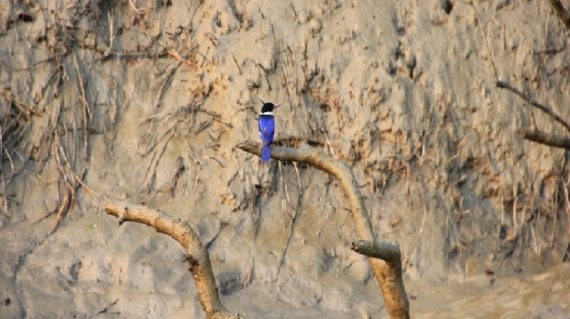
Neora Valley & Jaldapara Birding Tour
November – March
A trip every bird watcher must do!
In Neora Valley & Jaldapara Birding tour we visit two of the best birding spots in West Bengal. Neora Valley N.P. is famous for the virgin forest patch and its unique bio-diversity. The National Park enjoys the distinction of being situated over one of the oldest Reserve Forest in India. This park falls in the catchment area of the Neora River. The Northern boundary of Neora Valley National Park is contiguous with the forest of Sikkim and Bhutan.
Neora Valley National Park is distinct for its pristine scenic beauty and rich bio-diversity. The park is home to the many species like Himalayan Tahr, Black Bear, Sambar, Barking Deer, Goral, Tiger, Leopard, Chinese Marmorata Pangolin, Malayan Giant Squirrel, Wild Boar, Wild Dog, Clouded Leopard, etc. The park is also an ideal place for birds like Redstart, Whistling Thrush, Golden Headed Black Finch, Pheasants, Cuckoos, Minivets, Flycatchers, Maynas, Orioles, Owls, Parakeets, Partridges, Sunbirds, Swallows, Swifts and Woodpeckers, etc. Its floral diversity is noteworthy with mixed species of Rhododendrons, Bamboo, Sal, etc. along with several species of orchids.
Jaldapara National Park is situated at the foothills of the Eastern Himalayas in northern West Bengal and on the banks of the Torsa River. Jaldapara is spread across vast grassland with patches of riverine forests. It was declared a sanctuary in 1941 for protection of its great variety flora and fauna. Today, it has the largest population of the Indian one horned rhinoceros in the state, an animal threatened with extinction. The nearby Chilapata Forests is an elephant corridor between Jaldapara and the Buxa Tiger Reserve. Toto tribes and Mech Tribes (Bodos) used to stay in this area before 1800. At that time this place was known as “Totapara”. Jaldapara Wildlife Sanctuary was established in 1941 for the purpose of protecting the Indian One-horned Rhinoceros. In May 2012 it was declared a National Park.
The park holds the largest rhino population in India after Kaziranga National Park in Assam. Other animals in the park include Indian Leopard, Elephants, Sambar, Barking Deer, Spotted Deer, Hog Deer, Wild Boars and Bison.
Jaldapara is a paradise for bird watchers. It is one of the very few places in India, where the Bengal Florican is sighted. The other birds to be found here are the Crested Eagle, Pallas’s Fish Eagle, Shikra, Finn’s Weaver, Jungle Fowl, Peafowl (Peacock), Partridge and Lesser Pied Hornbill. Pythons, Monitor Lizards, Kraits, Cobras, Geckos, and about eight species of fresh water turtles can also be found here.
-
Reviews 0 Reviews0/5
-
Vacation Style Holiday Type
-
Wildlife
-
-
Activity Level Soft
-
Group Size Small Group
HIGHLIGHTS:
- Excellent bird watching opportunity at Neora Valley N.P.
- Birding & Safari at Jaldapara N.P.
FACT FILE:
- Type of Tour : Wildlife
- Grade : Soft
- Tour Duration : 06 Nights / 07 Days
- Best Season : Nov. – Mar.
- Ex-Destination : Bagdogra
- Accommodation (Nights) : Neora Jungle Camp (Kolakham) – 03; Jaldapara Tourist Lodge – 03
- Food Plan : All meals including lunch on day 01 to breakfast on day 07.
- Travel & Transport : Transfers & Sightseeing in small vehicles/SUV/MUV.
Travel:
- Surface transfers by AC Innova (4 Tourist per vehicle).
Others:
- Complimentary Sack & Cap.
- Entry fees at Neora Valley N.P. & Jaldapara W.L.S.
- One professional and specialized birding guide on all days.
- One Elephant & Two Jeep Safari’s at Jaldapara W.L.S.
- Goods & Service Tax as applicable.
- Travel to Kolkata & back.
- Camera Fees
- Cultural show
- Any expenses of personal nature such as mineral water, laundry, liquor, etc.
- Any kind of insurance such as accident, theft, medical, evacuation, etc.
- Tips to hotel staff, drivers, guides etc.
- Any extra costs incurred due to extension/change of the itinerary because of natural calamities, flight delays, road blocks, vehicle breakdown, etc. factors beyond the control of “Countryside Adventure Holidays Pvt. Ltd.” and its associates.
- Items not specified in the above in “Cost Includes”.
We can customize a similar tour to suit your requirements or if you are an independent traveller you can check our Fixed Departures.
- Day 1 Arrive at NJP/ Bagdogra; Drive to Kolakham (116 km; 5½ hrs)
- Day 2 Kolakham – Chowdaferi (15 km); Full Day Bird Watching
- Day 3 Kolakham – Chowdaferi (15 km); Full Day Bird Watching
- Day 4 Drive to Jaldapara Wild Life Sanctuary (120 km; 3 hrs); Afternoon Safari
- Day 5 Jaldapara W.L.S. - Morning Elephant Safari; Afternoon – Visit to Totopara
- Day 6 Jaldapara – Full Day Birdwatching
- Day 7 Jaldapara - Bagdogra (140 km; 4 hrs); Final Departure

Accommodation & Food:
- Kolakham – 03 Nights at Neora Jungle Camp on twin sharing basis; All meals included.
- Jaldapara – 03 Nights at Jaldapara Tourist Lodge on twin sharing basis; All meals included.
- Meals include – Breakfast, Lunch & Dinner only.










